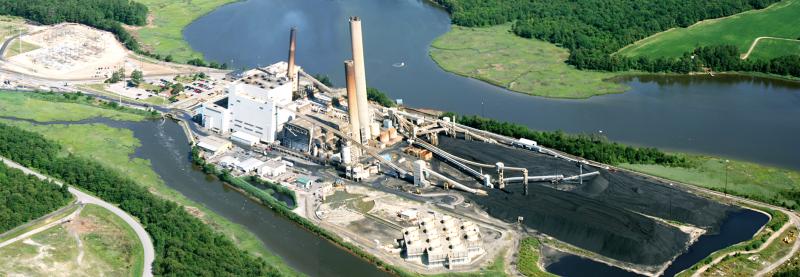The future of the Indian River power plant is unclear following a recent announcement that the plant will close.
During an Investor Day held in June, Chris Moser, NRG executive vice president of operations, said the coal-burning power plant at Indian River was among a few plants that would be retired in June 2022. The plants to be closed produce about 1,600 megawatts of dispatchable generation and make up about 50 percent of the company's coal fleet, Moser noted.
“While this is a difficult day, I would personally like to thank all of the employees past and present at these plants for operating them safely and reliably over their many, many decades of service,” he said.
Moser said NRG will continue to evaluate the viability of the rest of its regional electric portfolio in light of very poor auction prices, state subsidies and other market distortions.
“Other announcements may follow if market conditions do not improve,” he said. “In the meantime, we plan to proactively preserve the value of these generation sites, which may include potential redevelopment for renewables or storage.”
NRG spokesman Dave Schrader said about 50 people work at the plant, and they will have the opportunity to apply for open positions within NRG when the plant closes. It remains operational in the meantime, he said.
“NRG will also provide transition assistance and severance in accordance with NRG policies and applicable collective bargaining agreements, and will engage in effects bargaining with union leadership for represented employees at the impacted sites,” Schrader said, adding there are no plans at this time for the facility once it has been closed.
NRG stated in its 2020 Sustainability Report that a top priority is decreasing the amount of pollution from coal-burning plants. The report states that 80 percent of its coal residual is recycled through industrial applications such as on- and off-plant road construction, as well as in materials such as cement. This practice reduced the need for mining of virgin resources such as gravel and gypsum, according to the report.
Although there was industry talk in 2019 about extracting valuable rare earth elements from coal ash piles across the county, an NRG spokesman at the time said the company was not looking into it, and a University of Delaware professor said it would be costly to extract elements used to make computers and other high-tech equipment. In a previous interview, UD professor Dr. Saleem Ali said it makes more sense to use coal ash for building or construction projects.
NRG’s Schrader did not comment on potential use of the coal ash dump, only saying Burton Island has been formally closed and NRG will continue with its stewardship of the coal ash pile.
First operated by Delmarva Power & Light in 1957, the Indian River power plant for decades produced coal ash, a by-product of its coal-to-fuel-generated power. The coal ash was originally dumped next to the power plant on Burton Island – a mass of land created by the U.S. Army Corps of Engineers in the 1950s with spoils dredged from the Indian River Inlet. In 1979, DPL ceased dumping coal ash on the site when it built a new, state-of-the-art landfill at the Indian River facility. New Jersey-based NRG purchased the power plant from DPL in 2001.
Over the decades, vegetation grew atop the retired Burton Island dump, and state officials eventually stabilized the mound with rip-rapped rock and other materials to keep its toxic coal sluice from contaminating the Indian River. In a previous interview, a spokesman said he did not know how much coal ash was deposited on Burton Island.
By the early 2000s, areas of exposed coal ash on the island remained a concern for environmental groups and the Department of Natural Resources and Environmental Control, resulting in a federal lawsuit filed by a citizens group.
To limit direct contact with the ash, DNREC and NRG worked on placing fencing around the island to prevent wayward boaters from landing their boats there or setting foot on the site.
“In cooperation with DNREC, the U.S. Army Corps of Engineers, and the Center for the Inland Bays, NRG has completed all phases of our voluntary cleanup plan agreement approved by DNREC and defined within their secretary’s order of 2007 and 2018. Upon completion in 2017, we have implemented a long-term stewardship plan and will continue to comply with the inspection, maintenance, and monitoring commitments and obligations in the plan,” Schrader said.
Chris Bason, executive director of the Center for the Inland Bays, declined to comment on the closure at this time.












































